Measuring and setting the suspension sag of your bike on your own is easy with the Motool Slacker. Here's how it works...
We’ve been using the Motool Slacker Auto Zero sag measurement tool all year now, setting up our long termers and press test bikes. You might have seen us using it in some of our social media posts throughout the year, so we thought we should do a review for you, particularly with Christmas on the way!
You can read some basic info on the Motool Slacker here in our new products release on this fantastic product.
The great thing about the Slacker is that it makes a job that previously required two people easily achieved on your own as it does all of the measuring and calculations for you accurately and quickly.
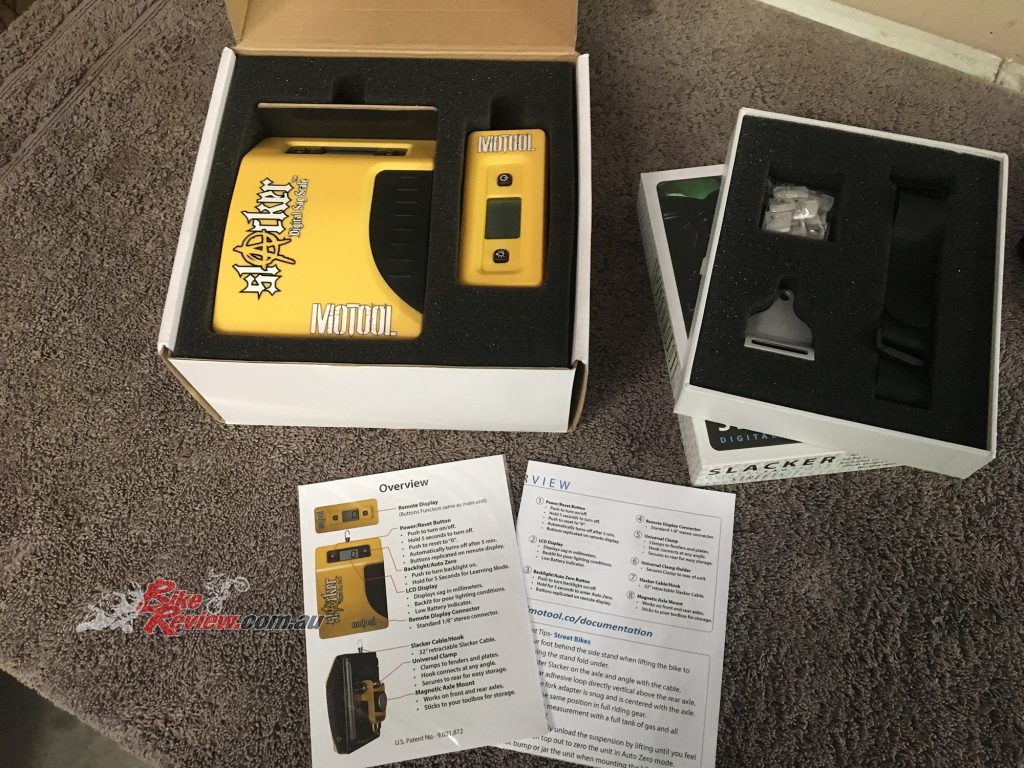
The kit comes with everything you need aside from batteries. We also got the additional Street Kit. Total cost is $199.95 RRP for the Slacker Zero and $39.95 for the Street Kit.
Normally, when adjusting sag, you first need to measure full extension, then static distance from the floor, then subtract that from the extended distance to give static sag. You then need to repeat that sitting on the bike in the riding position, repeating it twice for both ends. To do that, you need a helper to do the measuring while you handle the bike. With the Slacker, you can do it all alone very quickly.
We’ve used the Slacker in the past to to set up our KTM 350 EXC-F long termer.
We also use it regularly to set up our test bikes, which are mostly road bikes and just recently measured the sag on our Benelli Leoncino to see what we need to do to get it right. It was quick and easy and Jeff did it himself…
We can’t stress how easy the Motool Slacker is to use. It’s a simple tool but a brilliant idea and will pay itself off in no time. In fact, if you pay to have your sags set the labour savings would just about cover the cost of the Slacker after a few bikes and hopefully you will get many, many uses out of the Slacker over the years, saving loads of cash and hassles.
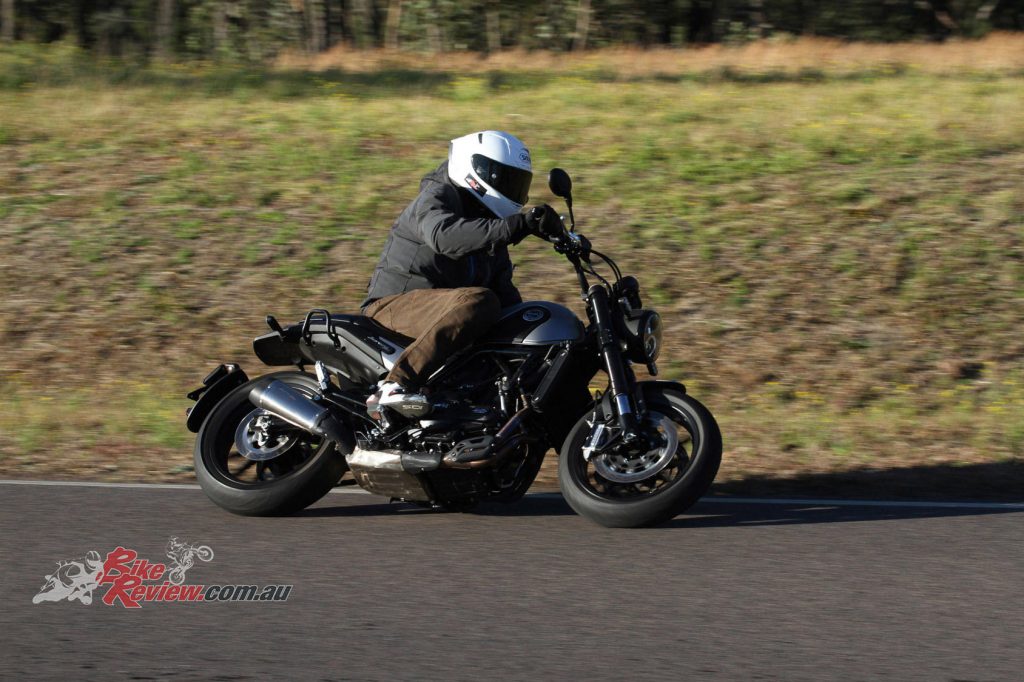
BikeReview-Leoncino-Update18Setting sags correctly helps to keep a bike balanced and better over bumps and holes.
The first job is to calculate the sag you want. For a road bike like the Leoncino, a basic daily rider, a good guide I have always found works well over a wide range of roads is 30 per cent of travel at the front and 25 per cent of travel at the rear, rider on board, for a daily use more comfy set up that can still cope with a bit of sporty riding. The Benelli has 125mm of travel in the forks and 112mm in the shock, so we are aiming at 37.5mm sag in the forks and 28mm at the back.
To get static sag, we can deduct around 10mm average for a 75kg rider. So let’s see what we got with the Slacker and what we can do with the Leoncino.
Once you have the Slacker string connected, hook up the handlebar mounted display so you can easily do the job on your own. This simply plugs into the Slacker with the lead provided and attaches to the handlebars via a velcro strap.
The remote display has the same functions as the Slacker so everything can be controlled now from the handlebar. Using the sidestand as leverage, lift on the bars and fully extend the forks, then zero the slacker.
Once sorted, it is time to stand alongside the bike holding it upright. Holding the front brake, bounce the front end up and down five times to loosen and seal stiction on the fork inner tube and to help the forks settle. Release the brake and give the forks one more bounce with no brakes.
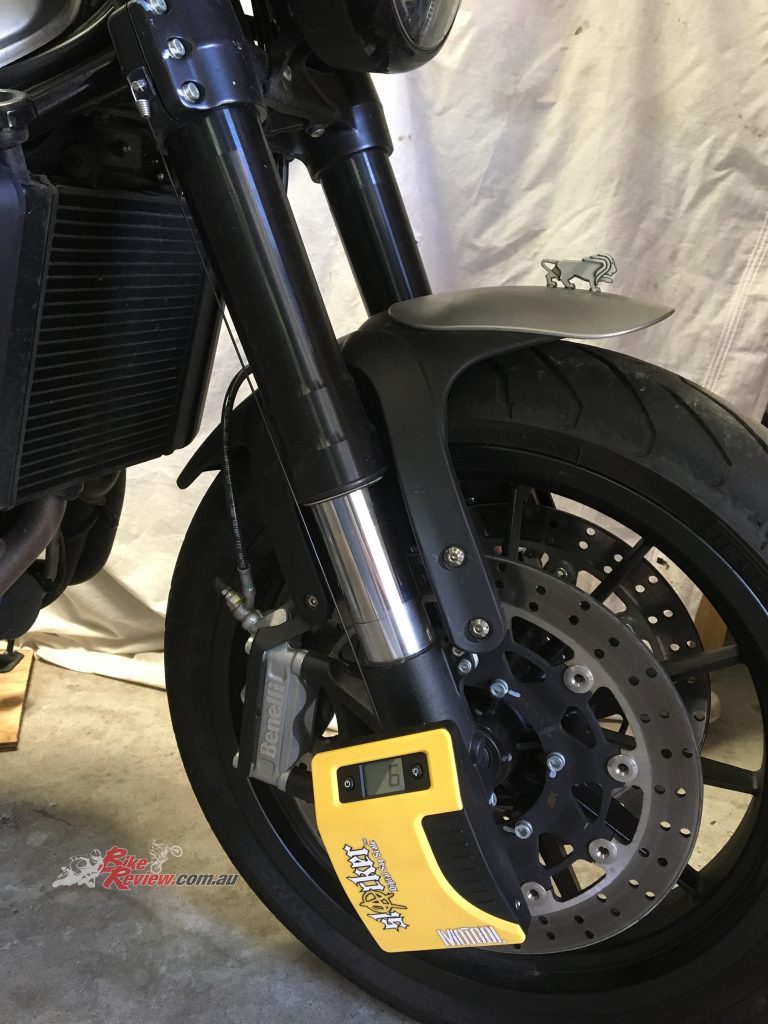
The Leoncino only has 6mm of static sag. It should be closer to 28mm. With no preload adjustability, we will need to sort the forks with internal changes.
You will now have a reading on the display showing the static sag (unloaded) of the bike. In the case of the Leoncino, the static sag is only 6mm, which as we suspected would be the case, is way off the ideal amount.
Next, sit on the bike in your normal riding position. Again, bounce the forks up and down, then when they settle, you will have the sag amount displayed on the remote display. Repeat this a few times until you get a consistent reading. In the case of the Leoncino, it is 18mm, around 20mm off our ideal sag.
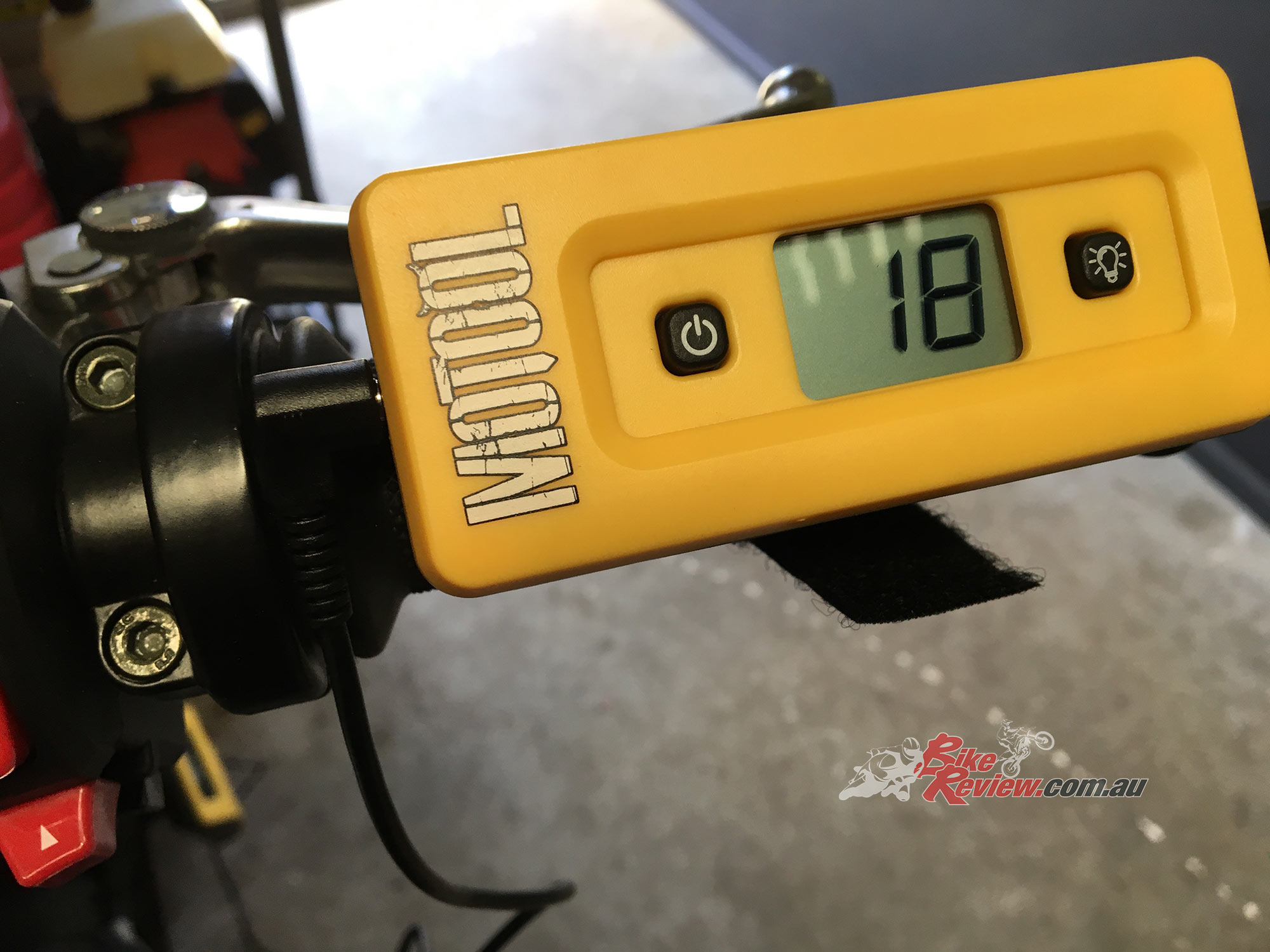
With no preload adjustment, we will now strip the forks and look at the spacers inside and the air gap. If we can’t resolve the issue, we will change springs. The lack of sag in the front-end of the Leoncino really effects the ride, as the forks top out all the time over holes, such as on the motorway when there are corrugations on the conrete surface, making for a very uncomfortable ride.
It also misbehaves over mid-turn bumps when the forks are not far enough in the stroke to allow the wheel to ride dips and holes, causing the tyre to lose contact and cause chattering and a harsh ride.

If your bike has preload adjustment, this is the point where you can repeat steps until the correct sag is achieved, either adding or removing spring preload. Sometimes compression damping adjustment can help to set sag as well as preload but you don’t want to be riding on compression rather than spring, so it is generally best to set you spring sag with the comp back off.
Once you have set the front up, it is time to move the Slacker unit to the back of the bike.
Fit another stick on hook somewhere in a straight line of travel above the rear axle, move the Slacker to the back axle and connect the string/cable. You can leave the remote display on the handlebar as the cable is very long, which is convenient.
Kneeling alongside the right hand side of the bike (use the Slacker on the side opposite the sidestand unless you are lucky enough to have a centrestand). Push up under the seat area or pillion grab rail area to fully extend the rear suspension, then zero the Slacker.
Now walk around to the left side, take the bike off the stand and bounce the rear up and down five times then let it settle. You will now have a static sag figure, in the case of our Benelli, it is 21mm. Our ideal amount is 18mm, however, this is only a guide and it is the sag with rider on that we are interested in.
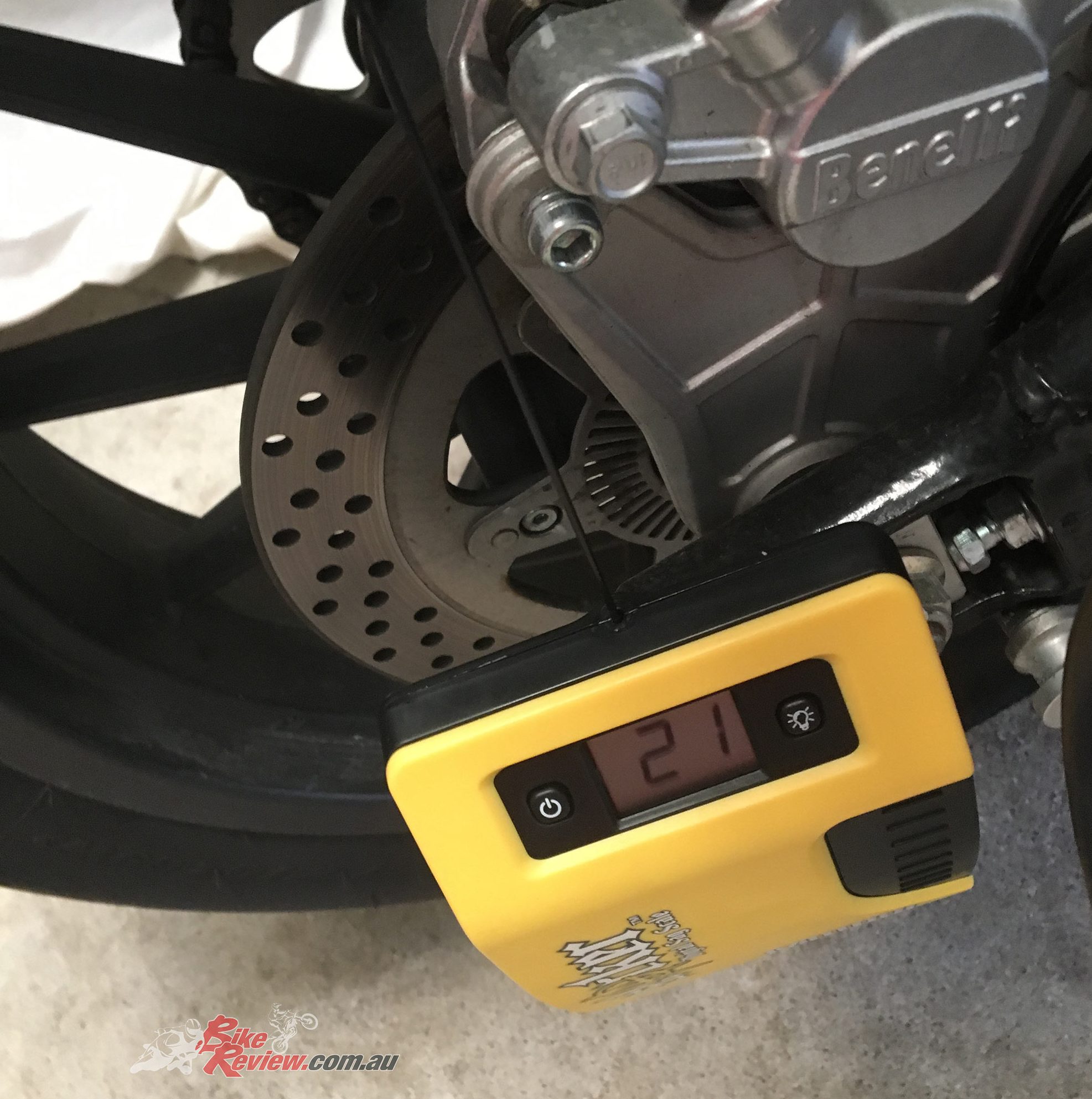
Sitting on the bike now, bounce the back up and down with your weight then sit in you usual spot, try not to take any weight through your legs, which will be on the ground only for balance. If you are alone this will be the best you can do and will be fine.
If you are alongside a wall, you may be able to get the bike to balance point with both feet on the pegs by touching your elbow against the wall but generally, front and rear, one foot on the pegs and one on the ground for balance is fine.

You will now have your sag figure, in our case, only 23mm! So we reduce rear spring preload and repeat until we are happy. Now the Benelli has 29mm at the rear, which is spot on with Jeff on it and he is the main person riding the bike.
So using the Slacker is so easy compared the old fashioned mate with a tape measure way. You can quickly and easily do this by yourself and the entire process took Jeff around 10-minutes start to finish.
The Slacker is easy to use, comes with a range of connections and is available for $199.95 RRP (Street kit an extra $39.95) in all good bike shops via the national distributor Pro Accessories, you can check out the Pro Accessories website here.
Motool Slacker Gallery
The Verdict | Product Review: Motool Slacker Auto Zero – Sag measurement
Excellent!
The great thing about the Slacker is that it makes a job that previously required two people easily achieved on your own as it does all of the measuring and calculations for you accurately and quickly. Normally, when adjusting sag, you first need to measure full extension, then static distance from the floor, then subtract that from the extended distance to give static sag. You then need to repeat that sitting on the bike in the riding position, repeating it twice for both ends. To do that, you need a helper to do the measuring while you handle the bike. With the Slacker, you can do it all alone very quickly.



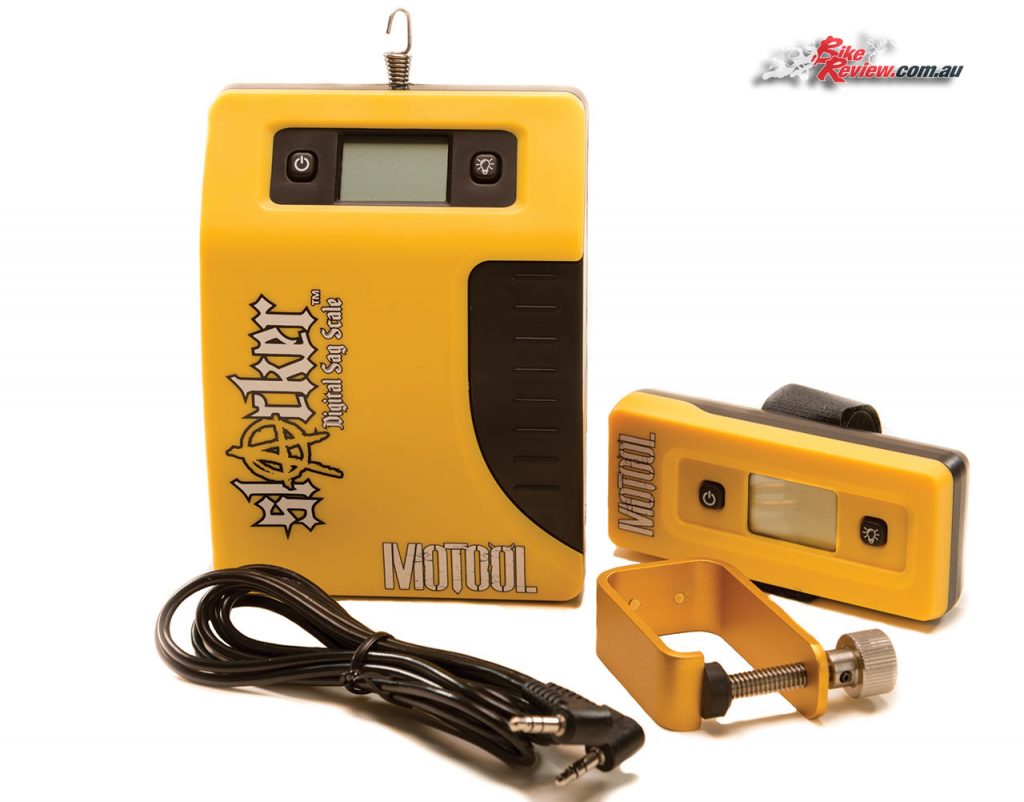
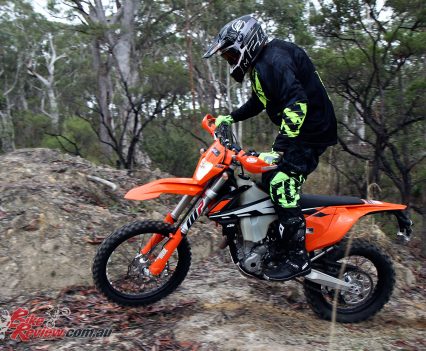

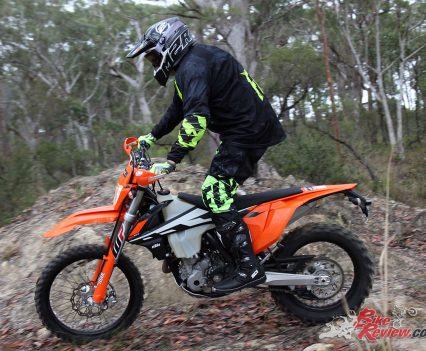

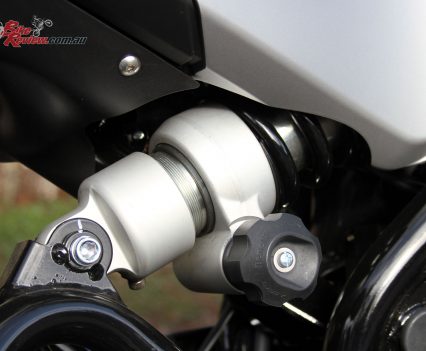
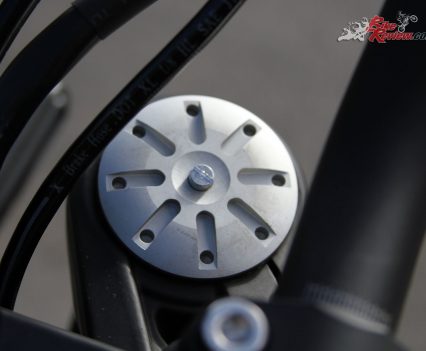
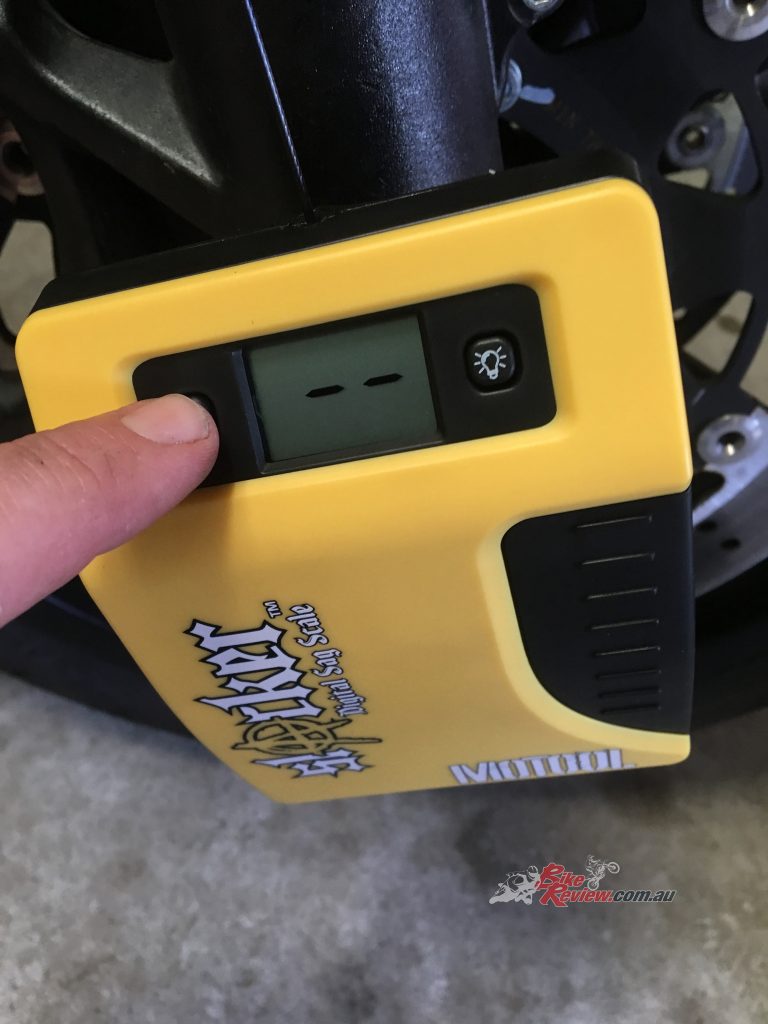

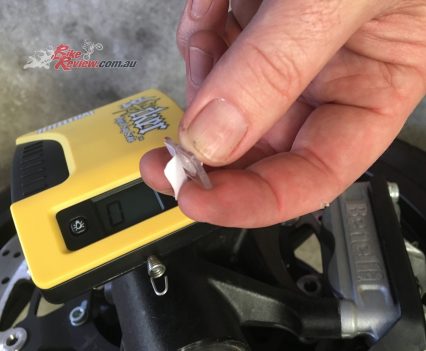



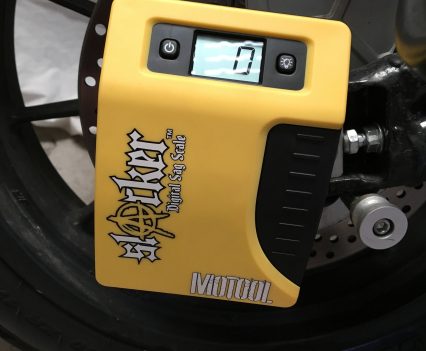
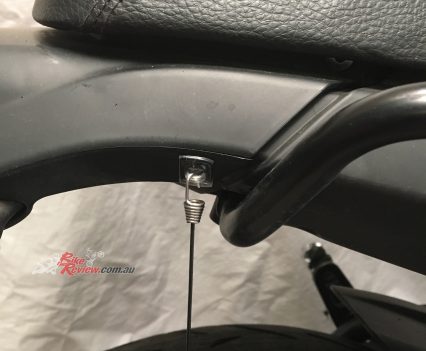
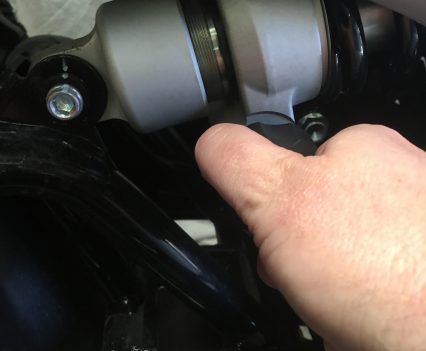

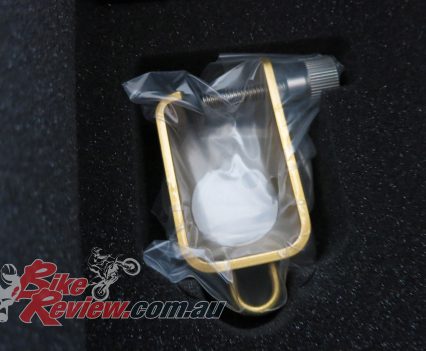
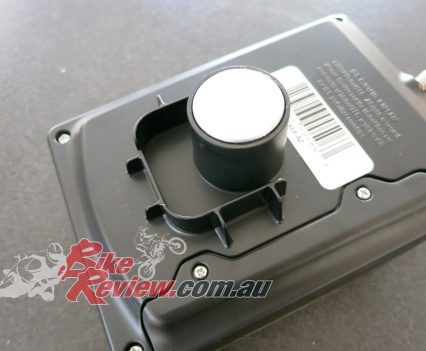
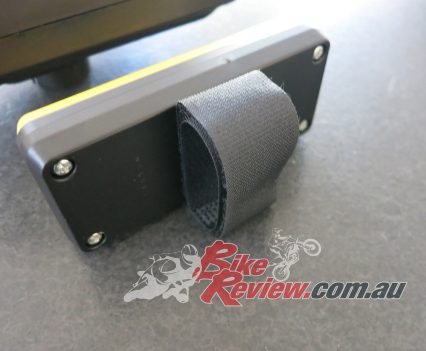
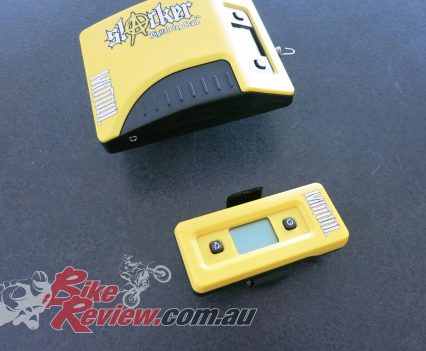
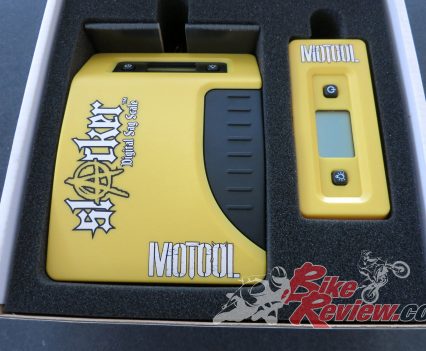






















November 24, 2020
Looks the bees knees, but and a big but is the cost.
Just to set up one bike possibly and a mates bike, then tool sits in the motorcycle tool draw gathering dust. You have to admit we all don’t have 2 or more bikes in the shed do we.
I saw in my local Bunnings/Aldi a measuring tape that had the cable/string attachment to do readings etc and with a bit of Aussie ingenuity you could do the same measurements for the cost off quality measuring tape, and the tape could be used around the house etc as a versatile tool.
Just saying as the $$ these days have to be wisely spent.
I’d rather have a mate come around and do it the old way over a few beers.
Just my thoughts.
Oh! watch Dave Moss.